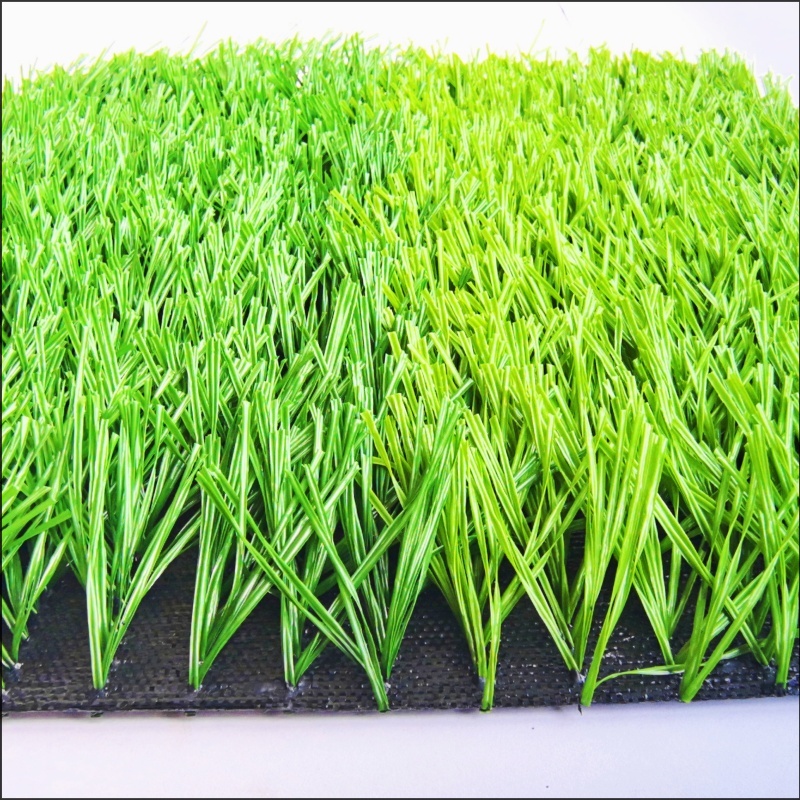Field Report: Why Football Grass (FG50) is showing up on serious pitches
I’ve walked a lot of synthetic pitches, and—to be honest—some look great for a year and then fade like a bad memory. The exception, increasingly, is Football Grass (FG50) from XYGrass, made in Hope New District, Mengcun County, Cangzhou City, Hebei Province. The company’s mantra is simple: start with better resin, guard against UV, and test like a skeptic. Many customers say the surface feels fast but player-friendly, which is a hard balance to strike.

What it is, in plain terms
At its core, Football Grass (FG50) is a 50 mm football turf system: UV-stabilized PE monofilament primary yarn with a supportive PP thatch, tufted into a multi-layer backing and typically paired with silica sand and SBR/EPDM infill. It’s the classic modern football build—done carefully. XYGrass, a professional soccer grass manufacturer, says they keep tight control from pellet to pitch, which, in my experience, matters more than the brochure gloss.
Technical snapshot (real-world numbers, not fantasy)
| Parameter | Spec (≈ typical; real-world use may vary) |
|---|---|
| Pile height | 50 mm |
| Yarn system | PE monofilament + PP curly thatch |
| Dtex / gauge / stitches | 12,000–16,000 dtex; 5/8″; ~150–180 stitches/m |
| Tuft density | ≈ 9,450–10,500 tufts/m² |
| Backing | PP cloth + reinforcement grid + SBR latex (PU optional) |
| UV/weathering | ISO 4892-3 ≥ 3,000 h; color fastness ≥ 7 (approx.) |
| Shock absorption (FIFA) | ≈ 60–68% (ASTM F355 / FIFA methods) |
| Ball roll / rebound | 4–8 m / 0.60–0.85 m |
| Service life & warranty | 6–10 years with maintenance; typical warranty 5–8 years |
How it’s made (quick process flow)
- Materials: UV-stabilized PE pellets with HALS package; PP curly thatch; REACH-conscious pigments; latex/PU backing.
- Extrusion: Controlled draw ratios for yarn spine/diamond profiles → lower split-out under cleats.
- Tufting: 5/8″ gauge, uniform stitch density; then backing application and curing.
- System build: Silica sand base layer + SBR/EPDM infill to calibrated depth (usually 18–22 mm).
- Testing: Ball roll/rebound, rotational resistance, shock absorption, vertical deformation, seam strength.
- Certs & references: Designed to meet FIFA Quality Programme lab criteria, EN 15330-1, ISO 4892-3 UV, and ASTM F355 impact tests.

Where it fits
Stadium renovations, municipal sports parks, school and academy training grounds, 7-a-side cages, and community fields. I’ve seen Football Grass (FG50) hold up well in high-UV coastal sites and in dry continental climates—maintenance habits still make the biggest difference, of course.
Vendor comparison (field buyer’s view)
| Vendor | Pros | Watch-outs |
|---|---|---|
| XYGrass (Football Grass (FG50)) | Consistent yarn lot control; FIFA/EN test know-how; customization; reasonable lead times ≈ 2–4 weeks | PU backing optional may add cost; global install partners vary by region |
| Generic importer | Often cheapest upfront | Mixed resin quality; sparse test data; color fade risk around year 2–3 |
| Local installer-brand | Great support; fast fixes; one-stop install | Specs sometimes rebadged; confirm lab reports and yarn source |
Customization
- Yarn profile: spine, diamond, or tape blends
- Pile heights: 40/50/60 mm; colors: bi-color green, line-in white or sewn-in
- Backing: SBR latex standard; PU for hydrolysis resistance
- Infill: SBR, EPDM, TPE; sand gradation tailored to ball roll targets
Case notes (what users report)
- Northern China school field: after two winters, seams intact; shock absorption still in the mid-60% range (spot tests).
- Community complex in a hot coastal zone: coaches say the surface “plays quick” but studs bite; grooming every 2–3 weeks.
- Academy 7-a-side: reduced rubber splash after switching to EPDM infill and deeper brushing schedule.
“Surprisingly resilient. We expected more fiber split by year three—hasn’t happened,” one facility manager told me. I guess maintenance pride pays dividends.

Compliance and testing
A properly built Football Grass (FG50) system is designed to meet FIFA Quality benchmarks (lab and field), EN 15330-1 performance and durability clauses, ASTM F355 impact attenuation, and ISO 4892-3 UV cycles. Materials are selected with REACH awareness; third-party reports (e.g., SGS) are commonly provided on request.
Bottom line
If you want a fast, TV-friendly surface that doesn’t chew up players, Football Grass (FG50) is a safe short list pick—especially when the installation and maintenance plan are taken as seriously as the yarn recipe.
Authoritative sources
HEBEI XIONGYI RUBBER & PLASTIC PRODUCTS CO., LTD. (“XY Grass”) is a Chinese manufacturer and exporter of artificial grass, offering a comprehensive range of products including landscaping grass, sports grass, carpet grass, and green walls (vertical grass). artificial grass wholesaleXY Grass is dedicated to the R&D and production of artificial turf, utilizing the industry’s latest technologies and establishing regional industrial alliances to achieve resource sharing.artificial grass for sale As one of China’s few integrated artificial grass specialists, XY Grass combines extruding, weaving, coating, and international trade under one roof.artificial turf for sale Our clients span over 60 countries across Asia, Europe, Oceania, North and South America, and Africa. Last year, we sold over 5 million square meters of artificial grass domestically and overseas. turf grass for sale Our products have passed rigorous tests for UV resistance, fire retardancy, REACH, and ROHS compliance, ensuring safety for children and pets. XY Grass is committed to providing global customers with the most competitive artificial grass solutions.super blog